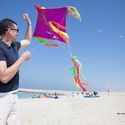-
About
- About Listly
- Community & Support
- Howto
- Chrome Extension
- Bookmarklet
- WordPress Plugin
- Listly Premium
- Privacy
- Terms
- DMCA Copyright
- © 2010-2025 Boomy Labs


 Mike Smith
Mike Smith
Listly by Mike Smith
Almost daily, Bhutan grows with photogenic locations and festivals. And that is magnetising tourists all over the world to choose Bhutan as their unanimous destination.
If you choose spring, the period between April and May, to visit Bhutan, then make it to Paro. This is no hard destination, as it is located close to the international airport. The very first thing that allures you is Paro's Tigers Nest Monastery.
The festivals at the monastery will instil core Buddhist principles in you. In the early morning the festival will show a huge image of Guru Thongdrel. There is a belief in this community that seeing the guru will purify their souls. If you stay at a Paro Hotel such as Uma by COMO, Paro, Bhutan, then it is much easier to reach Paro Tshechu.
When you visit Bhutan between September and October, you can reach Thimphu Tshechu for photographic occasions. This area is home to the tradition of masked dances. Try to capture the moving dances of Guru Tshengye (eight manifestations of Guru) and Shaw Shachi (dance of the stags).
Here you will find quite an old temple, which is believed to be set up in the 7th century. If you have plans to visit the festival of Tschechu, then you should have a real commitment. The festival will last in full spirit for five days. The festival aside, you can also see temples in the surrounding. Most picturesque spots would call not only for photography but also for an adventurous hike. If you manage to enter a temple, you will certainly get memorable photographic occasions.
Well, this is one remarkable spot in Bhutan. At the Douchula Pass, you can overlook the Himalayas. The pass is located as you travel from Thimpu to Punahka. You can also see 108 memorial stupas which are established by the eldest Queen Mother.
The Punahka valley is bordered by two rivers: Mo Chhu (mother) and Pho Chhu (father). As you pass Punakha Dzong, you can see how the rivers join each other. A perfect spot to enjoy a rafting ride – certainly another joyous moment for the photographer in you. So rise early in the morning to catch up with the picturesque fields, rivers and, above all, the morning dew!
Punakha Dzong is the largest in Bhutan. Inside the Dzong rests sacred relics. You have to reach there by crossing a bridge over the river. And that bridge too will give you memorable photographic moments.
As you travel from Trashigang to Samdrup Jonkhar, you are naturally close to India. And you will naturally notice a change in weather as well as temperature. You will get to feel the cold air from Himalayas.
An overnight stay at a farmhouse means you have the opportunity to be familiar with the Bhutanese lifestyle. That lifestyle contains essential elements such as stone bath, sleeping under the farmhouse rafters and traditional preparation of food. Such a relaxed stay would let you capture essential moments of their lifestyle.
